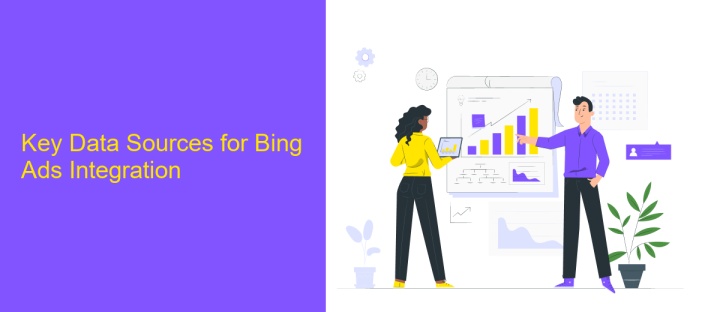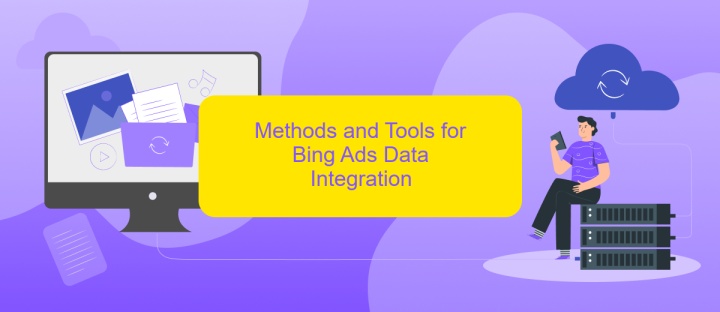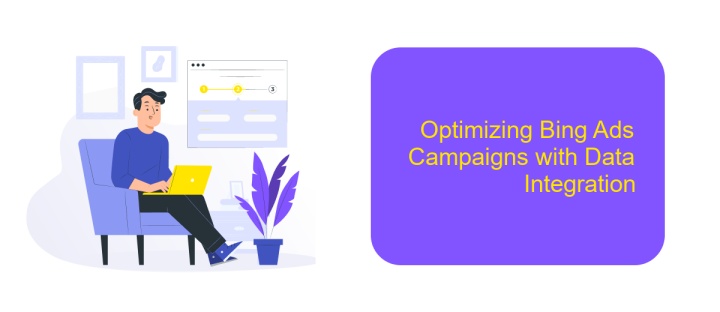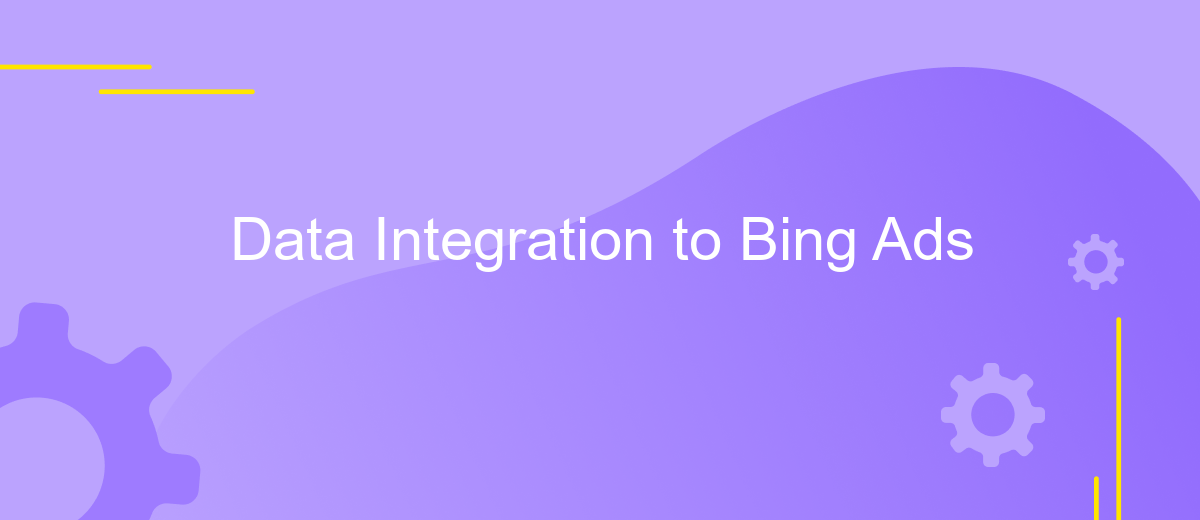Data Integration to Bing Ads
Data integration with Bing Ads is a crucial step for businesses looking to optimize their advertising strategies and enhance campaign performance. By seamlessly connecting various data sources, advertisers can gain valuable insights, improve targeting, and streamline their marketing efforts. This article explores the benefits and techniques of data integration with Bing Ads, providing a comprehensive guide for businesses aiming to leverage data-driven decision-making in their digital advertising endeavors.
Understanding the Importance of Data Integration for Bing Ads
Data integration plays a crucial role in maximizing the effectiveness of advertising campaigns on Bing Ads. By consolidating various data sources, marketers gain a comprehensive view of their audience's behavior and preferences. This holistic understanding enables more precise targeting and enhances the decision-making process, ultimately leading to higher conversion rates and improved return on investment.
- Unified data provides insights into cross-channel performance.
- Improved audience segmentation and targeting strategies.
- Enhanced ability to track and measure campaign success.
- Streamlined reporting and analytics for better decision-making.
Integrating data into Bing Ads not only optimizes ad spend but also fosters a more personalized advertising experience. By leveraging data-driven insights, marketers can tailor their messages to resonate with specific audience segments, ensuring that their ads are both relevant and engaging. As a result, businesses can build stronger relationships with their customers, driving brand loyalty and long-term success in the competitive digital advertising landscape.
Key Data Sources for Bing Ads Integration

Integrating data into Bing Ads effectively requires identifying and utilizing key data sources. One crucial source is customer relationship management (CRM) systems, which store valuable customer interaction data. By integrating CRM data, advertisers can tailor their Bing Ads campaigns to target specific audience segments, enhancing personalization and engagement. Additionally, web analytics platforms provide insights into user behavior on websites, helping to refine ad targeting strategies. These platforms offer data on traffic sources, conversion rates, and user demographics, which are essential for optimizing ad performance.
Another vital data source is e-commerce platforms, which contain transaction data that can be leveraged to create more effective ad campaigns. By understanding purchasing patterns and customer preferences, advertisers can design ads that resonate with their target audience. To streamline the integration process, services like ApiX-Drive can be utilized. ApiX-Drive facilitates the seamless connection of various data sources with Bing Ads, automating data transfers and ensuring that campaigns are informed by the most relevant and up-to-date information. This integration empowers advertisers to make data-driven decisions, improving the overall effectiveness of their advertising efforts on Bing Ads.
Methods and Tools for Bing Ads Data Integration

Integrating data into Bing Ads requires a strategic approach to ensure seamless data flow and accurate reporting. The process begins with identifying the key data sources, such as CRM systems, analytics platforms, and third-party tools, that need to be integrated. Understanding the data structure and format is crucial to ensure compatibility with Bing Ads' requirements.
- Use Bing Ads API: This tool allows for direct integration, enabling data retrieval and campaign management through automated processes.
- Implement Data Connectors: Utilize connectors that facilitate the transfer of data from various platforms into Bing Ads, ensuring real-time updates and consistency.
- Leverage ETL Tools: Extract, Transform, Load (ETL) tools help in processing large datasets, transforming the data into a compatible format, and loading it into Bing Ads.
By employing these methods and tools, businesses can streamline their data integration process, leading to more efficient campaign management and insightful analytics. Regularly monitoring the integration process ensures data accuracy and helps in making informed decisions. This strategic approach not only saves time but also enhances the overall performance of advertising campaigns on Bing Ads.
Optimizing Bing Ads Campaigns with Data Integration

Integrating data effectively into Bing Ads campaigns can significantly enhance their performance. By leveraging comprehensive data sets, advertisers can gain valuable insights into customer behavior, preferences, and trends. This allows for more precise targeting, ultimately improving ad relevance and engagement.
One of the key benefits of data integration is the ability to create highly personalized ad experiences. By analyzing data from various sources, marketers can tailor their messaging to specific audience segments, increasing the likelihood of conversion. Furthermore, data integration facilitates real-time adjustments, enabling advertisers to respond quickly to changing market dynamics.
- Identify high-performing keywords and adjust bids accordingly.
- Utilize demographic data to refine audience targeting.
- Analyze customer journey data to optimize ad placements.
- Monitor campaign performance metrics for continuous improvement.
Incorporating data integration into Bing Ads campaigns not only enhances targeting precision but also enables a more agile marketing approach. By continuously analyzing and integrating data, advertisers can adapt strategies to maximize ROI and achieve campaign objectives more efficiently. This data-driven approach ensures that marketing efforts are both effective and aligned with consumer needs.
- Automate the work of an online store or landing
- Empower through integration
- Don't spend money on programmers and integrators
- Save time by automating routine tasks
Measuring the Success of Your Bing Ads Data Integration Strategy
To effectively measure the success of your Bing Ads data integration strategy, it's crucial to establish clear objectives and key performance indicators (KPIs) from the outset. Start by identifying what you aim to achieve through integration, such as improved campaign performance, enhanced data accuracy, or streamlined reporting. Utilize analytics tools to track these KPIs, assessing metrics like conversion rates, click-through rates, and return on ad spend. Regularly reviewing these metrics will provide insights into the effectiveness of your integration efforts and highlight areas for improvement.
Leveraging automation tools like ApiX-Drive can significantly enhance your data integration process. ApiX-Drive facilitates seamless data transfer between Bing Ads and other platforms, ensuring real-time data synchronization without manual intervention. By automating these processes, you can reduce errors and save time, allowing you to focus on optimizing your campaigns. Evaluate the impact of ApiX-Drive on your workflow efficiency and data accuracy as part of your success measurement. Continuous monitoring and adjustment are key to maintaining a successful integration strategy, enabling you to adapt to changing business needs and maximize the value of your Bing Ads investments.
FAQ
How does data integration with Bing Ads work?
What are the benefits of integrating data with Bing Ads?
Can I automate data integration with Bing Ads?
What types of data can be integrated with Bing Ads?
How can I ensure data security during integration with Bing Ads?
Routine tasks take a lot of time from employees? Do they burn out, do not have enough working day for the main duties and important things? Do you understand that the only way out of this situation in modern realities is automation? Try Apix-Drive for free and make sure that the online connector in 5 minutes of setting up integration will remove a significant part of the routine from your life and free up time for you and your employees.


